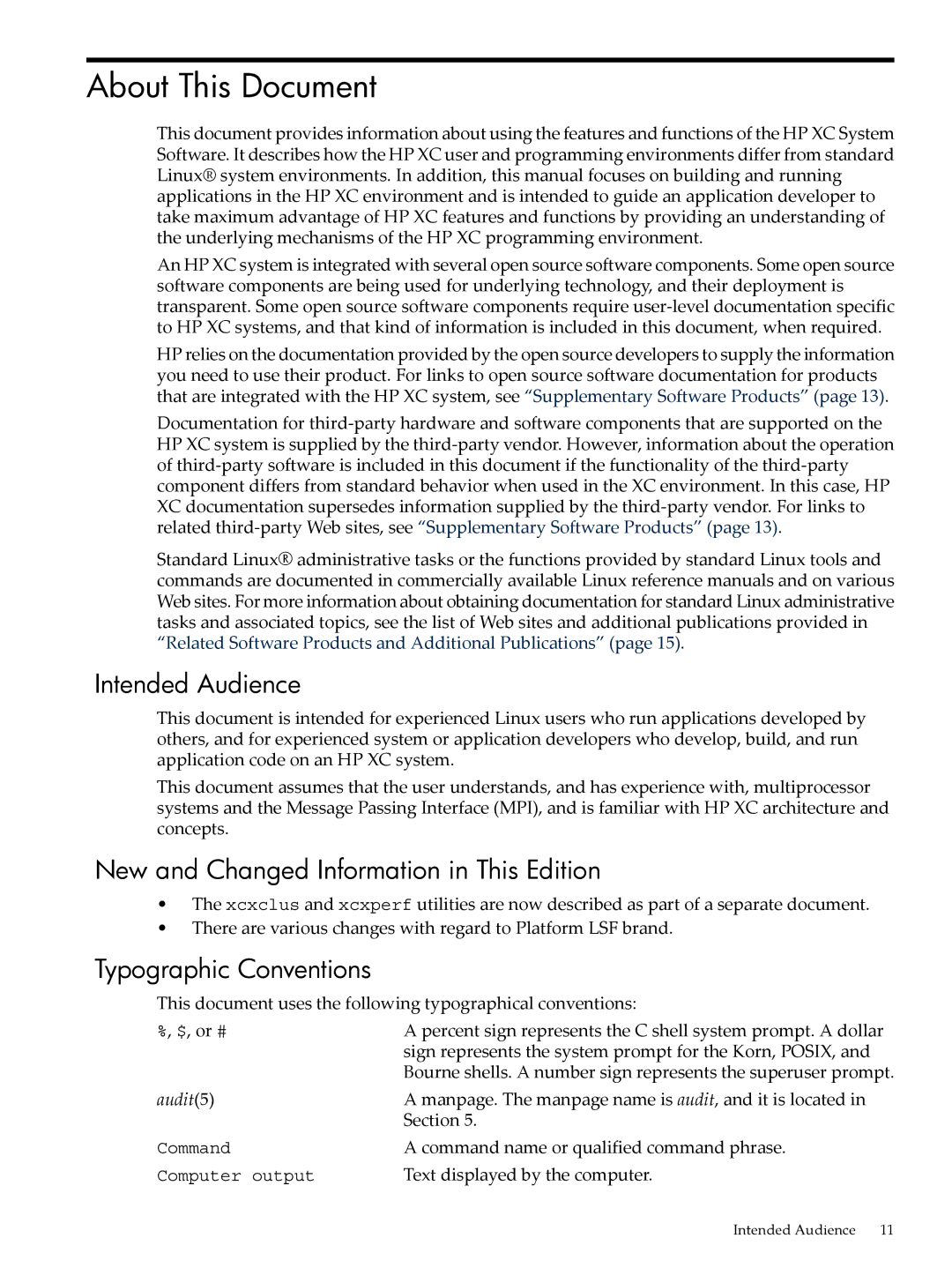About This Document
This document provides information about using the features and functions of the HP XC System Software. It describes how the HP XC user and programming environments differ from standard Linux® system environments. In addition, this manual focuses on building and running applications in the HP XC environment and is intended to guide an application developer to take maximum advantage of HP XC features and functions by providing an understanding of the underlying mechanisms of the HP XC programming environment.
An HP XC system is integrated with several open source software components. Some open source software components are being used for underlying technology, and their deployment is transparent. Some open source software components require
HP relies on the documentation provided by the open source developers to supply the information you need to use their product. For links to open source software documentation for products that are integrated with the HP XC system, see “Supplementary Software Products” (page 13).
Documentation for
Standard Linux® administrative tasks or the functions provided by standard Linux tools and commands are documented in commercially available Linux reference manuals and on various Web sites. For more information about obtaining documentation for standard Linux administrative tasks and associated topics, see the list of Web sites and additional publications provided in “Related Software Products and Additional Publications” (page 15).
Intended Audience
This document is intended for experienced Linux users who run applications developed by others, and for experienced system or application developers who develop, build, and run application code on an HP XC system.
This document assumes that the user understands, and has experience with, multiprocessor systems and the Message Passing Interface (MPI), and is familiar with HP XC architecture and concepts.
New and Changed Information in This Edition
•The xcxclus and xcxperf utilities are now described as part of a separate document.
•There are various changes with regard to Platform LSF brand.
Typographic Conventions
This document uses the following typographical conventions:
%, $, or # | A percent sign represents the C shell system prompt. A dollar |
| sign represents the system prompt for the Korn, POSIX, and |
| Bourne shells. A number sign represents the superuser prompt. |
audit(5) | A manpage. The manpage name is audit, and it is located in |
| Section 5. |
Command | A command name or qualified command phrase. |
Computer output | Text displayed by the computer. |
Intended Audience | 11 |
